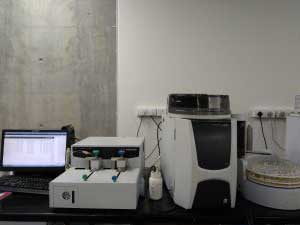Benzalkonium bromide, also known as New Germinal, is a quaternary ammonium salt cationic surfactant with a bactericidal effect. At room temperature, benzalkonium bromide is a yellow colloid. At low temperatures, it may gradually form a waxy solid.
The aqueous solution of benzalkonium bromide is an alkaline reaction and produces a lot of foam when shaking. It is easily soluble in water or ethanol, slightly soluble in acetone, and insoluble in ether.
Benzalkonium bromide has a strong and fast bactericidal effect, low toxicity, and no irritation to skin and tissues. It has no corrosive effect on metal and rubber products and other advantages.
Benzalkonium bromide is used in industry as a non-oxidizing algaecide and cleaning agent commonly used in circulating water treatment, etc. In the pharmaceutical field, it can be applied in compound disinfectants, eye drops, etc.
The total amount added to different products varies according to the prescribed use.
In order to better ensure the safety of medication and use, people usually need to make an accurate determination of benzalkonium bromide content. The content of benzalkonium bromide can be determined by titration, spectrophotometry, and liquid chromatography.
The content of benzalkonium bromide is determined by the titration method. The specific operation is to take about 0.25g of the product and weigh it precisely. Place in a conical flask with a stopper. Add 50ml of water and 1ml of sodium hydroxide solution, and shake well. Add 0.4ml of bromophenol blue indicator solution and 10ml of trichloromethane, titrate with sodium tetraphenyl boron titrant (0.02mol/L), and shake strongly until the blue color of the trichloromethane layer disappears. Each 1ml of sodium tetraphenyl boron titrant (0.02 mol/L) is equivalent to 7.969 mg of C22H40BrN.
The titration method is suitable for the determination of the content of a single component in a simple matrix. There are limitations if complex matrices are encountered. The same applies to spectrophotometric methods. The absorption background is high in complex matrices, and the UV absorption of benzalkonium bromide is very low.
How to determine the content of benzalkonium bromide in complex matrices? High performance liquid chromatography (HPLC) may be a good option for the determination of benzalkonium bromide in components.
This method requires the use of a laboratory high-performance liquid chromatograph with a mobile phase of 0.02 mol/L sodium heptane sulfonate solution (containing 0.1% triethylamine, pH adjusted to 3.45±0.10 with phosphoric acid)-acetonitrile (35:65); flow rate 1.0 ml/min, detection wavelength 210 mm, injection volume 10 μL.
The method was validated by preparing the control solution of the test solution and the negative control solution. The method was validated by aspirating different concentrations of the control solution and making a standard curve with the peak area (Y) as the vertical coordinate and the concentration x (μg/mL) as the horizontal coordinate under the chromatographic conditions, to verify the detection limit, precision, and recovery of the method. The detection was performed on the test solution.
The high-performance liquid chromatographic method is sensitive, accurate, and easy to operate, and is suitable for the determination of benzalkonium bromide. This method can accurately accomplish the determination of benzalkonium bromide content in the presence of complex matrices.







